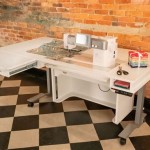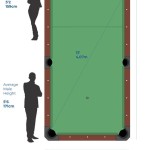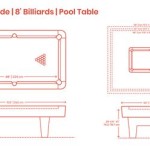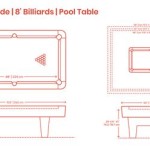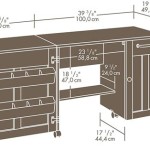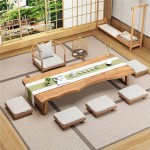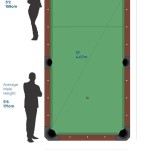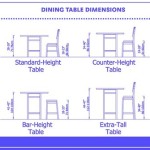Mid-Century Coffee Tables: A Stylish and Functional Centerpiece
Mid-century coffee tables represent a significant design movement that emerged in the post-World War II era, roughly spanning the 1940s to the 1960s. Characterized by clean lines, organic shapes, and a focus on functionality, these tables embody the optimistic spirit and innovative design principles of the time. They are more than just surfaces; they are stylistic anchors that contribute significantly to the overall aesthetic of a living space. The enduring popularity of mid-century coffee tables lies in their versatility, ability to complement diverse interior styles, and timeless appeal.
The mid-century modern design movement was influenced by various architectural and artistic schools, including Bauhaus, Scandinavian design, and American modernism. Bauhaus principles emphasized simplicity and functionality, while Scandinavian design brought a focus on natural materials and organic forms. American modernism, in turn, promoted the use of new technologies and materials. These diverse influences coalesced into a distinct aesthetic that favored clean lines, minimal ornamentation, and an emphasis on practicality. The resulting furniture designs, including coffee tables, were intended to be both beautiful and functional, reflecting the changing needs and lifestyles of post-war families.
The materials used in mid-century coffee tables were carefully selected to reflect the design ethos of the era. Solid wood, particularly teak, walnut, and oak, was a common choice for legs, frames, and tabletops. These hardwoods offered durability, warmth, and a natural aesthetic that complemented the clean lines of the designs. Veneers, often made from exotic woods, were also used to create visually interesting surfaces without the expense of solid wood. Glass was another popular material, often used for tabletops to create a sense of transparency and lightness. Metal, typically steel or brass, was used for legs and accents, adding a touch of industrial chic to the designs. The combination of these materials allowed designers to create coffee tables that were both aesthetically pleasing and structurally sound.
Key Characteristics of Mid-Century Coffee Tables
Several defining characteristics distinguish mid-century coffee tables from other furniture styles. These include distinct design elements, material choices, and functional considerations that contribute to their unique aesthetic and enduring appeal.
The first defining characteristic is the clean lines and minimalist forms. Mid-century coffee tables typically feature simple geometric shapes, such as rectangles, squares, and circles, with minimal ornamentation. The emphasis is on the purity of the form and the quality of the materials. This minimalist approach aligns with the broader mid-century modern design philosophy, which sought to eliminate unnecessary details and focus on essential functionality.
Another key characteristic is the use of organic shapes and curves. While clean lines are prevalent, many mid-century coffee tables also incorporate gentle curves and rounded edges. These organic shapes soften the overall aesthetic and create a sense of visual harmony. Kidney-shaped coffee tables, for example, were a popular design choice, adding a touch of whimsy and sophistication to living spaces. The combination of straight lines and organic curves creates a balanced and visually appealing design that is characteristic of the mid-century modern style.
Finally, a distinctive feature is the combination of contrasting materials. Mid-century coffee tables often feature a juxtaposition of different materials, such as wood and metal or glass and wood. This contrast adds visual interest and highlights the unique qualities of each material. For example, a coffee table might feature a walnut tabletop with sleek metal legs, or a glass tabletop supported by a wooden frame. The careful selection and combination of materials contribute to the overall aesthetic and functionality of the table.
Popular Styles and Designs
Within the broader category of mid-century coffee tables, several distinct styles and designs emerged. These variations reflect the diverse influences and creative experimentation that characterized the era. Understanding these different styles can help individuals identify and appreciate the nuances of mid-century coffee table design.
One popular style is the "Atomic Age" coffee table. Inspired by the space race and advancements in science and technology, these tables often feature asymmetrical shapes, geometric patterns, and bold colors. Starburst motifs, boomerang shapes, and other futuristic elements were common design features. Atomic Age coffee tables represent the optimistic and forward-thinking spirit of the era, reflecting a fascination with the possibilities of the future.
Another prevalent style is the Scandinavian-inspired coffee table. Characterized by its simplicity, functionality, and use of natural materials, this style emphasizes clean lines, light wood tones, and minimalist ornamentation. Teak and birch were common wood choices, and designs often incorporated tapered legs and gently curved edges. Scandinavian-inspired coffee tables embody the principles of hygge, creating a sense of warmth, comfort, and understated elegance.
Finally, the "Danish Modern" coffee table represents a refined and sophisticated approach to mid-century design. These tables are typically made from high-quality hardwoods, such as teak and rosewood, and feature impeccable craftsmanship. Designs often incorporate elegant curves, subtle details, and a focus on proportion and balance. Danish Modern coffee tables are known for their timeless appeal and ability to elevate the aesthetic of any living space.
Selecting and Caring for Mid-Century Coffee Tables
Choosing the right mid-century coffee table involves careful consideration of various factors, including size, style, material, and condition. Proper care and maintenance are essential to preserve the beauty and longevity of these valuable pieces of furniture.
When selecting a mid-century coffee table, it is important to consider the size and scale of the living space. A coffee table that is too large can overwhelm the room, while one that is too small may appear insignificant. The height of the table should also be considered in relation to the height of the surrounding seating. Ideally, the coffee table should be approximately the same height as the seat cushions of the sofa and chairs. It is crucial to measure the available space and choose a coffee table that is proportional to the room.
The style and design of the coffee table should complement the overall aesthetic of the living space. Consider the existing furniture, wall colors, and accessories when choosing a coffee table. A clean-lined Scandinavian-inspired coffee table, for example, might be a good choice for a minimalist interior, while an Atomic Age coffee table could add a touch of retro flair to a more eclectic space. The style of the coffee table should reflect personal taste and create a cohesive and harmonious look in the room.
Proper care and maintenance are essential to preserve the beauty and value of mid-century coffee tables. Regular dusting and cleaning are important to remove dirt and grime. Use a soft cloth and a mild, pH-neutral cleaner to clean the tabletop and legs. Avoid using harsh chemicals or abrasive cleaners, as these can damage the finish. For wood surfaces, consider applying a furniture polish or oil periodically to nourish the wood and protect it from drying out. For glass tabletops, use a glass cleaner to remove smudges and fingerprints. With proper care, a mid-century coffee table can remain a cherished piece of furniture for generations.

Classy Joint Mid Century Coffee Table By Medallion Limited Furniture Co Casa Victoria Vintage On Los Angeles Sunset Boulevard

Sa Casper Coffee Table Brooks Thomas

Ellipse Large Coffee Table For Living Room Natural Walnut Modern Decorative Custom Design With Glass Top

Mid Century Art Display Coffee Table 46 52

Isamu Noguchi Inspired Glass Coffee Table

Mid Century Art Display Coffee Table 46 52

Coffee Table Furniture South

Don Shoemaker Mid Century Modern Coffee Table With Leather Top

5 Iconic Mid Century Modern Interior Design Furniture Pieces Laskasas

Coffee Tables Annefish Furnitures

